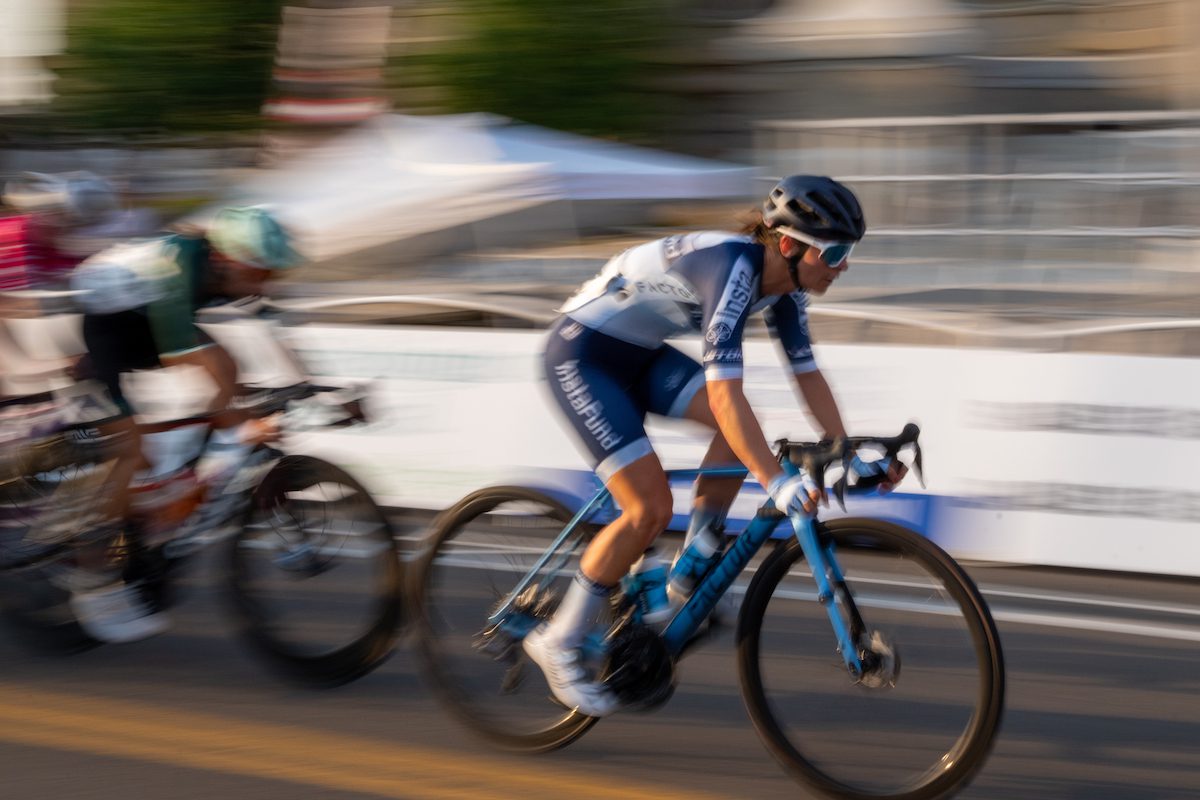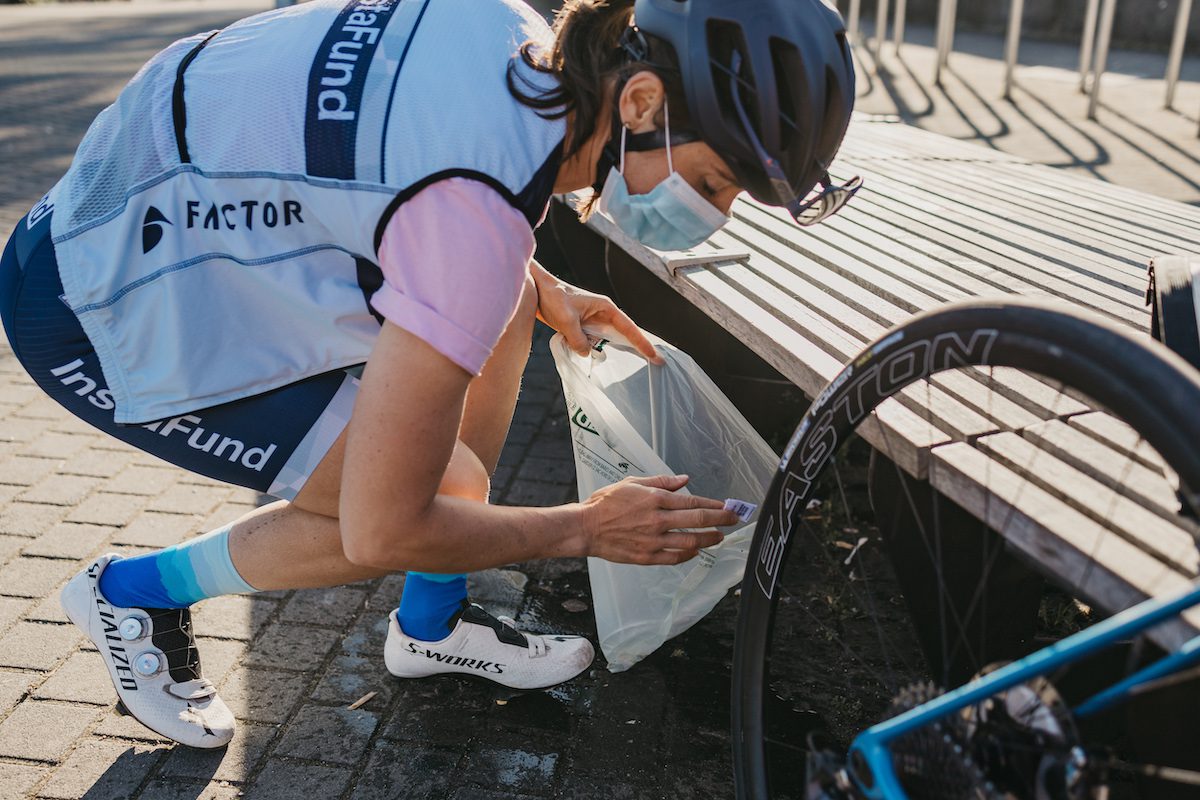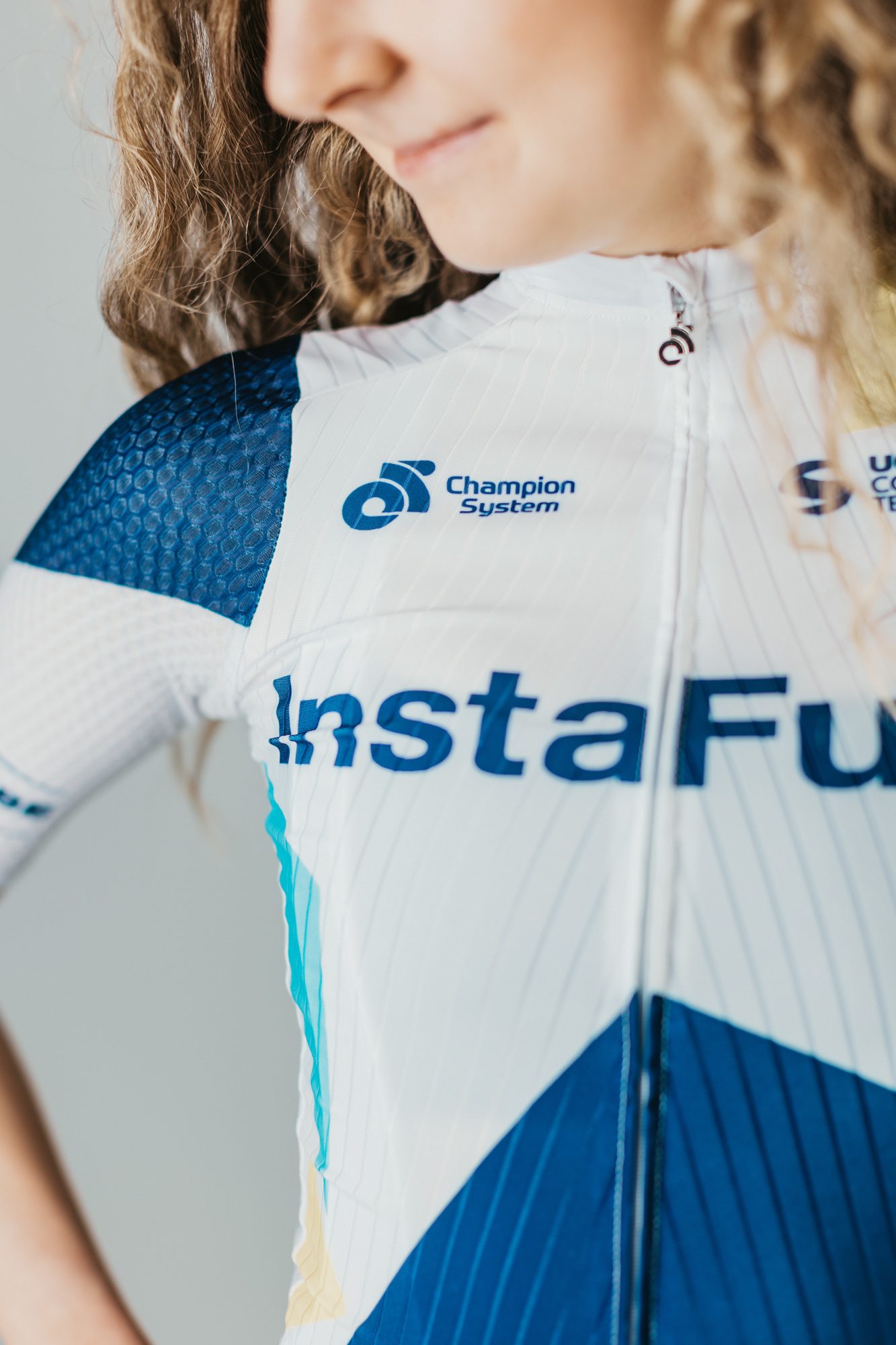How InstaFund Racing is going carbon neutral for 2022
Canadian UCI Continental team is racing greener this season
 Photo by:
Laura Fletcher
Photo by:
Laura Fletcher
Vancouver’s InstaFund Racing is headed to Europe with a different approach to racing in 2022. It’s not the UCI Continental team’s first swing a European racing. Since its founding in 2019, InstaFund’s expanded from North American racing to take on bigger European pro events.
So What makes 2022 stand out? InstaFund is aiming to race the entire season carbon neutral.
That’s no easy feat when you’re running an international racing program that hops between continents almost as frequently as it does countries. But InstaFund is already a few steps down the road. Last season, the team worked out how they could eliminate single-use plastics from their waste. Again, with on-bike nutrition, travel, and recovery needs, avoiding single-use containers is far from easy.

The effort is part of what is attracting some of the team’s roster.
“Being part of InstaFund LaPrima is special in that we are determined to shift the ingrained cycling culture from ‘new and more is better’ to sustainability and carbon neutral focus,” says Helena Coney. “The restoration of the planet will come out of a profound shift in human consciousness and InstaFund models this shift in the racing community.
“When Adam called me to discuss the possibility of working together again in 2022, I jumped at the chance of a second ‘once in a lifetime’ opportunity,” says Coney. She’s one of three Canadians on InstaFund’s roster. There are also two U.S. riders, two from New Zealand and one Swiss rider. The team is also expanding to off-rod events. Through all this, it remains fully funded by B.C.-based companies.
I spoke with Adam Korbin, one of the team’s managers and founders about why InstaFund thinks its so important to go carbon neutral and how they’re planning to pull it off.

Canadian Cycling Magazine: How did the first season with the team going single-use-plastic-free go? Were there any surprises or difficult adjustments?
Adam Korbin: All in all, it went very well. As is with anything new, there were some challenges. One way to reduce a team’s CO2 footprint is to reduce the amount of air travel, but we found that we were often holding a single-use item, say a yogurt container, after making a pit stop.
Over time we had a better grasp of the planning required, but there were still moments we found it difficult to follow our own rule. For example, I traveled with the team to the WWT Ceratizit Challenge by La Vuelta in Spain and saw that when riders finish, one of the first things they want from their soigneur is either a mini coke or some sparkling water. Neither item is readily available for purchase in an environmentally conscious container.
Again, all of this comes down to planning, and that was one reason we started with one clear goal “to be a single-use plastic free zone” before diving right into the deep end. To achieve real progress requires an open mind, holding yourself accountable, and committing to continued improvement – and then most importantly, sharing your learnings with others so that they can accelerate their own progress.

What’s involved with stepping up from single-use plastics to a full carbon-neutral season this year?
That’s a great question. The most important thing to know is that carbon-neutral does not mean we do not have emissions. It means that as an organization we are measuring, reducing where possible, and then offsetting our remaining emissions. But as a team we want to take things one step further. We want to be carbon positive – which essentially means that we also aim to create an environmental or social benefit.
So, the first step for us is to reduce our footprint as much as possible. That started with planning the racing calendar in a way that minimizes flights. At the same time we worked with our suppliers to optimize shipping, minimize packaging, and optimize our product needs. The other big thing for 2022 is our off-setting partners. One unique project the team is supporting (with hands-on time!) is the Fraser Rivershed Society’s wetlands restoration work.
We will also continue with race course clean-ups and women’s skills clinics. The team’s travel will be offset with gold standard offsets.
Other key things include: The continuation of being a single-use plastic-free zone, applying circular economy principles to increase the lifetime of what the team uses, minimizing air travel to the best of our ability, and continuing to work with value-aligned partners to support each other in our sustainability goals. Ultimately, our goal is to have a positive impact on this planet while racing our bikes, proving that as a cycling team we can all do better.

The team is more international for 2022 than it’s first few years. How did that develop? And why is it still important to remain B.C.-funded?
Yes and no. We actually had a more international team last season. It was pretty cool to line up at the Women’s World Tour Stage Race Vuelta a Burgos with five riders from five different nations. But yes, this season we again have an international roster. Much of that shift was organic. As the team’s race calendar became more international, so did the roster.
That said, we will always have the core Canadian roster representing British Columbia. After all it is where the team was founded and is based. One of the drivers behind the team stepping up to the UCI back in 2020 was to provide Canadian female riders with a pathway to international racing and the World Tour. That is still a key objective, and one of the reasons that InstaFund finances the team.
